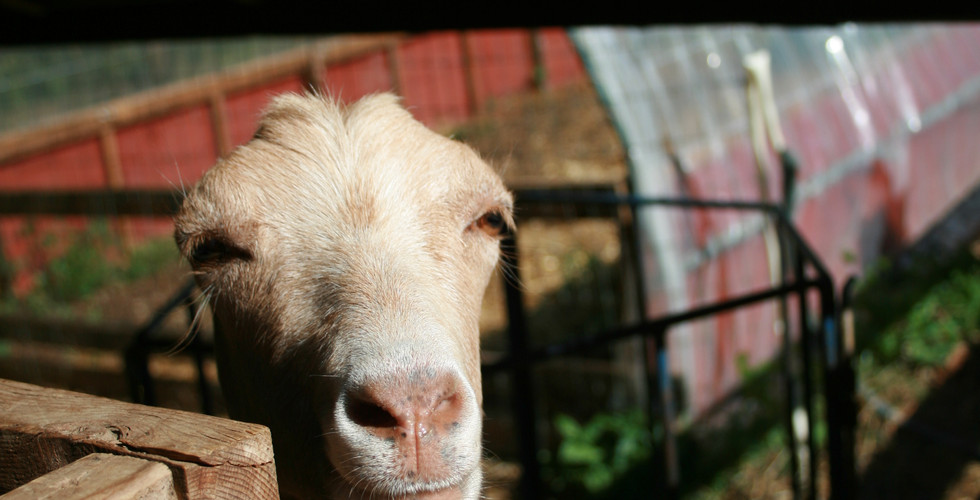Dead Baby Month
- Alexia Allen
- May 14, 2017
- 3 min read
Honey the goat went into labor late morning on Friday. One of the women who gets milk here at the farm stopped in to say hello, and I triumphantly told her to come back next week and see the baby goats.
Meanwhile Honey strained to get her kid out. I gave her raspberry leaves. I gave her ivy. I gave her a few coffee beans. None of these labor aids worked as the morning turned to afternoon, then to evening. Finally I put on a glove and reached into her womb, where I could not make heads or tails of the kid or kids in there. Honey was bleating in pain, her brown eyes bugging out with each contraction.
Daniel was next to me, wincing empathetically each time Honey threw back her head and groaned. I was able to get a hoof out, but I could tell the kid was dead. Had it been alive when I first reached in? Was there anything else I could have done? My previous attempts to reposition kids have happened when a first kid has already been born, with plenty of room in the now-baggy uterus to get kid headed towards the light.
“I need to call a vet,” I said, and by the light of a headlamp we called every goat vet in town. Daniel and I hoisted Honey into the towel-draped back seat of my car and drove to a large animal vet clinic.
“Hey, we got a hoof out already!” said the late-night vet on call. “We’ll just give her a little tranquilizer. It should make her say, ‘Oh, look at all the pretty lights.’”
“She’s pretty much like that anyway,” I replied, and poor Honey moaned as the large-handed vet popped a five-pound kid out of her. I hugged Honey’s neck “This is all because I was impatient for goat cheese! I am so sorry.” Honey was under the recommended weight limit for breeding—I hadn’t wanted to wait another year to breed her, and now the caprine child bride was paying for my impatience. It all might have gone differently if she had had two kids, each small enough to emerge easily from her tiny womb. A single kid, taking all her resources, had grown too big to position itself for a smooth birth.
“No uterine tearing. She should be fine to breed again. I’m glad we didn’t have to do a C-section,” said the vet, and sent me on my way with a bottle of antibiotics.
I slept in the barn with Honey that night, guarding her from the evil stepsister goats who were liable to ram her in her tender side. I also wanted Honey to have someone to love—maternal instincts are nothing to mess around with or ignore. We had the dead kid nearby in case Honey wanted to investigate it. She had very little interest, and I removed the kid a day later when Honey’s face smelled like decaying flesh after she licked it.
I knew what Honey’s face smelled like because I spent hours in the barn with her. I wrote letters, read books, and just lay next to her in the straw. I took her temperature two or three times a day, ready to jab a needle into the penicillin bottle and give her the full course of medicine if her temperature ventured above normal.
It never did. Perhaps I was lucky, perhaps the stream of antibiotic herbs I gave to her had helped, maybe she felt my love and concern. Maybe all of these. She ate garlic twice a day, wrapped in dried apple slices. For two weeks I monitored her, keeping a close eye on her reintroduction to the evil stepsisters.
Honey is still small, but in fine fettle. Her udder stretches to accommodate her swelling milk supply. I am glad that my haste in breeding her hasn’t hurt her future, though she may never reach her full potential size. She remains a quirky, delightful, and charming little milker, doing her best for the people she loves.
Honey the Earless Wonder!























Comments